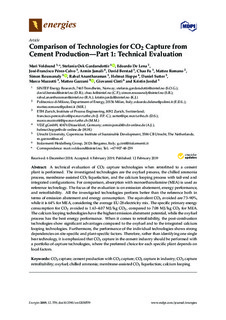| dc.contributor.author | Voldsund, Mari | |
| dc.contributor.author | Gardarsdottir, Stafania Osk | |
| dc.contributor.author | de Lena, Edoardo | |
| dc.contributor.author | Prez-Calvo, José-Francisco | |
| dc.contributor.author | Jamali, Armin | |
| dc.contributor.author | Berstad, David Olsson | |
| dc.contributor.author | Fu, Chao | |
| dc.contributor.author | Romano, Matteo | |
| dc.contributor.author | Roussanaly, Simon | |
| dc.contributor.author | Anantharaman, Rahul | |
| dc.contributor.author | Hoppe, Helmut | |
| dc.contributor.author | Sutter, Daniel | |
| dc.contributor.author | Mazzotti, Marco | |
| dc.contributor.author | Gazzani, Matteo | |
| dc.contributor.author | Cinti, Giovanni | |
| dc.contributor.author | Jordal, Aina Benedikte Kristin | |
| dc.date.accessioned | 2019-03-22T11:54:56Z | |
| dc.date.available | 2019-03-22T11:54:56Z | |
| dc.date.created | 2019-02-15T08:01:34Z | |
| dc.date.issued | 2019 | |
| dc.identifier.issn | 1996-1073 | |
| dc.identifier.uri | http://hdl.handle.net/11250/2591298 | |
| dc.description.abstract | A technical evaluation of CO2 capture technologies when retrofitted to a cement plant is performed. The investigated technologies are the oxyfuel process, the chilled ammonia process, membrane-assisted CO2 liquefaction, and the calcium looping process with tail-end and integrated configurations. For comparison, absorption with monoethanolamine (MEA) is used as reference technology. The focus of the evaluation is on emission abatement, energy performance, and retrofitability. All the investigated technologies perform better than the reference both in terms of emission abatement and energy consumption. The equivalent CO2 avoided are 73–90%, while it is 64% for MEA, considering the average EU-28 electricity mix. The specific primary energy consumption for CO2 avoided is 1.63–4.07 MJ/kg CO2, compared to 7.08 MJ/kg CO2 for MEA. The calcium looping technologies have the highest emission abatement potential, while the oxyfuel process has the best energy performance. When it comes to retrofitability, the post-combustion technologies show significant advantages compared to the oxyfuel and to the integrated calcium looping technologies. Furthermore, the performance of the individual technologies shows strong dependencies on site-specific and plant-specific factors. Therefore, rather than identifying one single best technology, it is emphasized that CO2 capture in the cement industry should be performed with a portfolio of capture technologies, where the preferred choice for each specific plant depends on local factors | nb_NO |
| dc.description.abstract | Comparison of Technologies for CO2 Capture from Cement Production—Part 1: Technical Evaluation | nb_NO |
| dc.language.iso | eng | nb_NO |
| dc.publisher | MDPI | nb_NO |
| dc.rights | Navngivelse 4.0 Internasjonal | * |
| dc.rights.uri | http://creativecommons.org/licenses/by/4.0/deed.no | * |
| dc.title | Comparison of Technologies for CO2 Capture from Cement Production—Part 1: Technical Evaluation | nb_NO |
| dc.type | Journal article | nb_NO |
| dc.type | Peer reviewed | nb_NO |
| dc.description.version | publishedVersion | nb_NO |
| dc.rights.holder | The Authors | nb_NO |
| dc.source.volume | 12 | nb_NO |
| dc.source.journal | Energies | nb_NO |
| dc.source.issue | 3 | nb_NO |
| dc.identifier.doi | 10.3390/en12030559 | |
| dc.identifier.cristin | 1677500 | |
| dc.relation.project | EC/H2020/641185 | nb_NO |
| cristin.unitcode | 7548,60,0,0 | |
| cristin.unitname | Gassteknologi | |
| cristin.ispublished | true | |
| cristin.fulltext | original | |
| cristin.qualitycode | 1 | |

